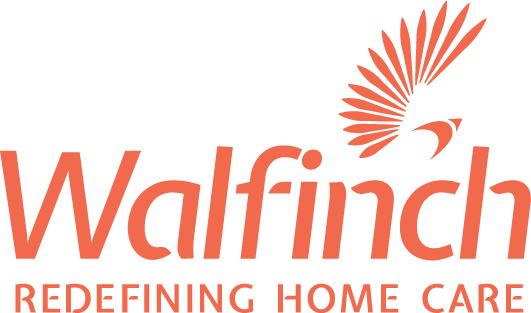Navigating the CQC audit process can be a daunting task for home care providers. With its complex set of regulations and standards, it’s essential to have a clear understanding of what is expected to ensure success. In this step-by-step guide, we demystify a CQC audit and provide valuable insights that will help you get through the process with confidence.
From preparing for the audit to conducting self-assessments, we cover all the essential steps you need to take to meet the CQC’s requirements. We’ll break down the audit criteria and show you how to assess your organisation’s compliance. Additionally, we’ll provide practical tips on how to develop effective policies and procedures, train your staff, and maintain robust documentation systems.
Whether you’re a first-time audit participant or seeking to improve your previous inspection results, this comprehensive guide will make the process more manageable.
Don’t let a CQC audit overwhelm you; you can do this!
Understanding the purpose of a CQC audit
The Care Quality Commission (CQC) is the independent regulator of health and social care in England. Its primary purpose is to ensure that healthcare providers meet the necessary standards of quality and safety. The CQC audit is a comprehensive assessment of an organisation’s compliance with these standards. It aims to identify areas of improvement and ensure that patients receive high-quality care.
The CQC audit process is designed to be fair, transparent, and consistent. It involves a thorough review of the organisation’s policies, procedures, and practices. The CQC assesses various aspects of care, including patient safety, effectiveness, responsiveness, and leadership. By conducting regular audits, the CQC holds healthcare providers accountable and helps drive improvements in the quality of care.
They ask the following 5 key questions in their inspectons:
- Are you safe?
- Are you effective?
- Are you caring?
- Are you responsive to people’s needs
- Are you well-led?
Key components of a CQC audit
To navigate the CQC audit successfully, it’s crucial to understand its key components. The audit consists of several stages, including a pre-inspection questionnaire, an on-site inspection, and a post-inspection report. Let’s explore each of these components in more detail.
- Pre-inspection questionnaire: Before the on-site inspection, home care providers are usually required to complete a detailed questionnaire. This questionnaire covers various aspects of your operations, such as governance, staffing, and client experience. It serves as a preliminary assessment to help the CQC identify any potential areas of concern.
- On-site inspection: The on-site inspection is the most critical phase of the CQC audit. During this stage, CQC inspectors visit your premises to assess your compliance with the required standards. Inspectors may interview staff, review client records, observe care being delivered, and assess your overall culture. The on-site inspection provides an in-depth evaluation of your performance and enables the CQC to gather evidence for its final report.
- Post-inspection report: Following the on-site inspection, the CQC prepares a post-inspection report that outlines its findings. The report highlights areas of compliance, as well as any concerns or areas requiring improvement. It also provides recommendations for action and sets out a timeframe for you to address any issues identified. The post-inspection report is a crucial document that guides your efforts to improve its quality of care.
Here’s an example of a CQC report for a Walfinch branch with a “Good” rating.
Preparation for a CQC audit
Preparation is key to a successful CQC audit. By taking proactive steps to assess your compliance and address any areas of concern, you can increase your chances of achieving a positive outcome. Here are some essential steps to help you prepare for a CQC audit.
- Familiarise yourself with the CQC’s standards: The CQC provides detailed guidance on its website, outlining the key areas of assessment and what is expected from you. By understanding these standards, you can tailor your preparation efforts and ensure compliance.
- Conduct a self-assessment: Before the CQC audit, it’s beneficial to conduct a self-assessment of your operations. This involves reviewing your policies, procedures, and practices against the CQC’s standards. Identify any areas of non-compliance or potential risks and develop action plans to address them. A self-assessment helps you proactively identify and resolve issues before the CQC audit.
- Develop effective policies and procedures: Review your existing policies and procedures and update them as necessary to align with the CQC’s requirements. Ensure that your policies are clear, comprehensive, and accessible to all staff members. Regularly review and update your policies to reflect changes in regulations or best practices.
- Train your staff: Well-trained and knowledgeable staff are crucial for delivering high-quality care. Provide comprehensive training to your staff on the CQC’s standards and expectations. Ensure that they understand their roles and responsibilities in maintaining compliance. Regularly provide refresher training and keep your staff informed about any changes in regulations or best practices.
- Maintain robust documentation systems: The CQC audit requires extensive documentation to support your compliance. Ensure that you have robust systems in place for capturing and maintaining accurate records. Regularly review and update your documentation to reflect changes in regulations or best practices. Establish clear processes for record-keeping and ensure that documentation is easily accessible to the CQC inspectors.
By following these preparation steps, you can lay a strong foundation for a successful CQC audit. Taking a proactive approach to compliance will not only improve your chances of success but also enhance the quality of care you provide to your clients
Remember, the CQC audit is not just a one-time event. It’s an ongoing process that requires commitment, dedication, and a culture of continuous quality improvement. By embracing the principles outlined in this guide and leveraging the available resources and tools, you can confidently navigate the CQC audit and achieve success in delivering exceptional home care services.












